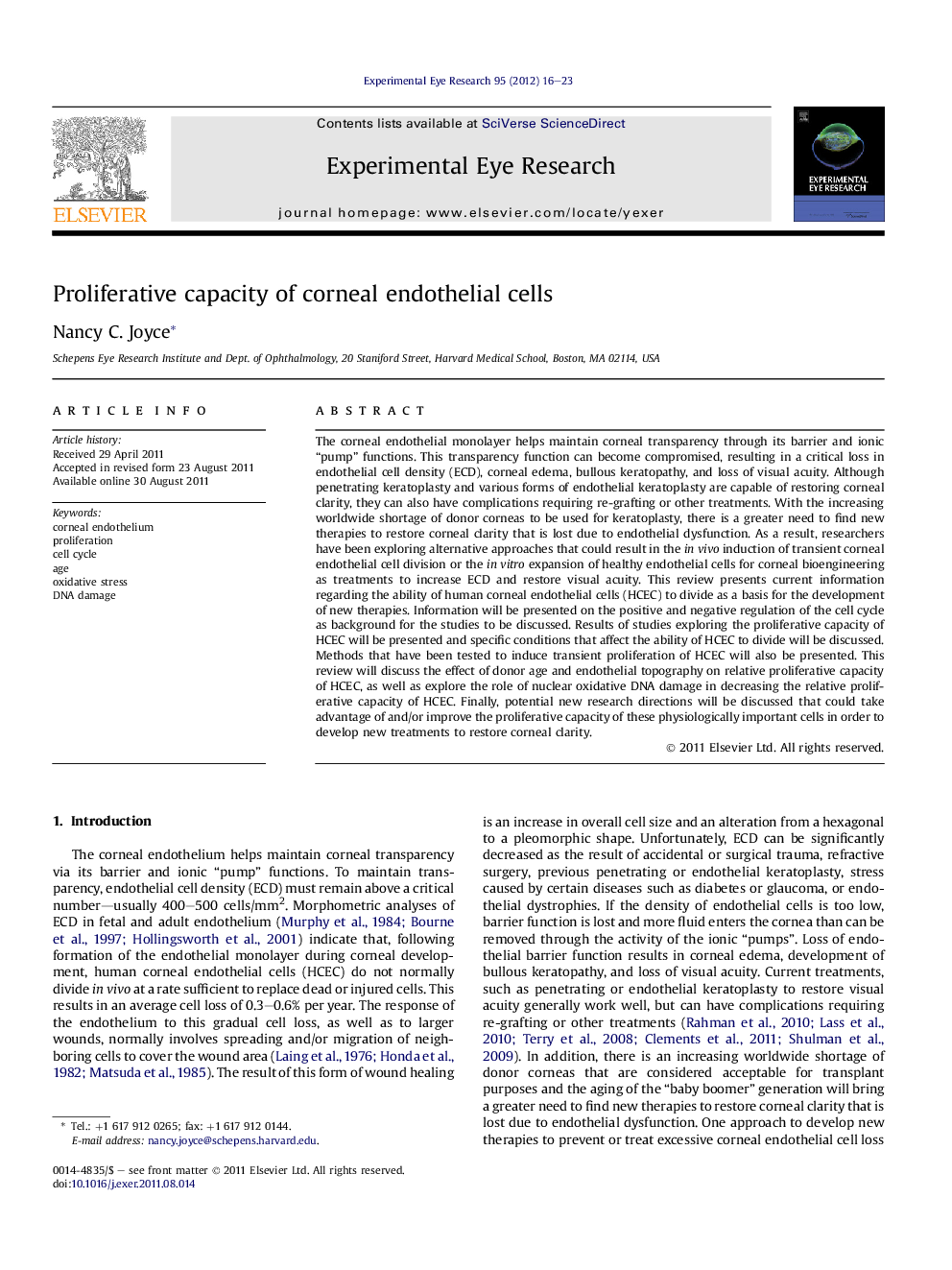| کد مقاله | کد نشریه | سال انتشار | مقاله انگلیسی | نسخه تمام متن |
|---|---|---|---|---|
| 4011438 | 1261145 | 2012 | 8 صفحه PDF | دانلود رایگان |

The corneal endothelial monolayer helps maintain corneal transparency through its barrier and ionic “pump” functions. This transparency function can become compromised, resulting in a critical loss in endothelial cell density (ECD), corneal edema, bullous keratopathy, and loss of visual acuity. Although penetrating keratoplasty and various forms of endothelial keratoplasty are capable of restoring corneal clarity, they can also have complications requiring re-grafting or other treatments. With the increasing worldwide shortage of donor corneas to be used for keratoplasty, there is a greater need to find new therapies to restore corneal clarity that is lost due to endothelial dysfunction. As a result, researchers have been exploring alternative approaches that could result in the in vivo induction of transient corneal endothelial cell division or the in vitro expansion of healthy endothelial cells for corneal bioengineering as treatments to increase ECD and restore visual acuity. This review presents current information regarding the ability of human corneal endothelial cells (HCEC) to divide as a basis for the development of new therapies. Information will be presented on the positive and negative regulation of the cell cycle as background for the studies to be discussed. Results of studies exploring the proliferative capacity of HCEC will be presented and specific conditions that affect the ability of HCEC to divide will be discussed. Methods that have been tested to induce transient proliferation of HCEC will also be presented. This review will discuss the effect of donor age and endothelial topography on relative proliferative capacity of HCEC, as well as explore the role of nuclear oxidative DNA damage in decreasing the relative proliferative capacity of HCEC. Finally, potential new research directions will be discussed that could take advantage of and/or improve the proliferative capacity of these physiologically important cells in order to develop new treatments to restore corneal clarity.
► Human corneal endothelial cells (HCEC) are inhibited in G1-phase in vivo, but retain proliferative capacity.
► HCEC proliferation is affected by donor age and endothelial topography, most likely due to oxidative nuclear DNA damage.
► New treatments to prevent or reverse the effects of oxidative stress could increase the proliferative capacity of HCEC.
Journal: Experimental Eye Research - Volume 95, Issue 1, February 2012, Pages 16–23